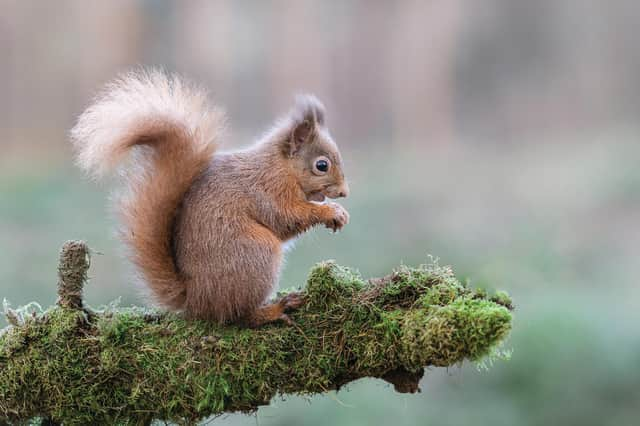Travel 2022: Going nuts for squirrels


But after the introduction of the non-native grey squirrel a century ago, their indigenous tufty cousins went into decline in many areas, unable to compete with the larger, more voracious greys.
However, helped by a project run by Saving Scotland’s Red Squirrels, the species is making a comeback in many areas. The organisation is a collaboration led by the Scottish Wildlife Trust and has been going for more than ten years.
Advertisement
Hide AdAdvertisement
Hide AdThe key aim is to protect the reds in areas where they have been pushed out by competition from greys or have been ravaged by squirrelpox, a disease which greys have developed immunity to, but they can spread it to red squirrels, to which it is fatal.
Gill Hatcher of Saving Scotland’s Red Squirrels says: “We work in those places where reds are waiting in the wings, or both species are currently living side by side but without intervention the reds would be pushed out.”
The species map on the project’s website is a mosaic of red and grey sightings in the South of Scotland, but in the rest of the country the divide roughly follows the Highland boundary line, with reds to the north and west.
Hatcher says: “A more specific situation occurs in Aberdeen, where grey squirrels were introduced in the 1970s as a separate population.
“They took over the whole of the city and spread out to the wider countryside, but through our control work we have pushed back so the greys are now just in the centre and we are hoping to completely remove them over the next few years.”
The results are clear, with those households on the outskirts increasingly spotting reds in their gardens.
In terms of helping the native population, the best thing that the public can do is report a sighting – of either colour.
Hatcher says: “It doesn’t matter where you are in the country, if you see one, you can report it on our website and that database knowledge can really feed into where we concentrate our conservation efforts and day-to-day work.
Advertisement
Hide AdAdvertisement
Hide Ad“The geographical spread is more important than the size of populations, as these will fluctuate every year, but we are just as interested in grey squirrel sightings – although we do get more reports of red; I think people are naturally more excited when they see a red.”
If you are lucky enough to have red squirrels visiting garden feeders, the advice is to keep the equipment scrupulously clean, particularly where the squirrel populations are mixed, to prevent transmission of disease.
Despite reds being notoriously shy creatures, there are many places in Scotland where you can almost guarantee encountering them, particularly if you go searching early in the morning.
Hatcher recommends The Lodge Forest Visitor Centre, a mile north of Aberfoyle, which has a hide and a live video feed. She says: “It is especially good if you have young children who might not be absolutely silent, as the squirrels there seem quite used to a bit of noise.”
The Scottish Wildlife Trust at Loch of the Lowes near Dunkeld is a good location for photographing the numerous squirrels that come to the feeders there, and RSPB Loch Lomond now has a healthy population that can be viewed from an accessible position.
And back in Aberdeen, Hazlehead Park is one of the areas that has been a real success in terms of re-colonisation.
Hatcher says: “There is a very established population. And every time we hear of a squirrel sighting a bit closer to Aberdeen city centre, there is a celebration.”
- This article first appeared in the spring edition of Scotsman Travel 2022
A message from the Editor:
Advertisement
Hide AdAdvertisement
Hide AdThank you for reading this article. We're more reliant on your support than ever as the shift in consumer habits brought about by Coronavirus impacts our advertisers.
If you haven't already, please consider supporting our trusted, fact-checked journalism by taking out a digital subscription.